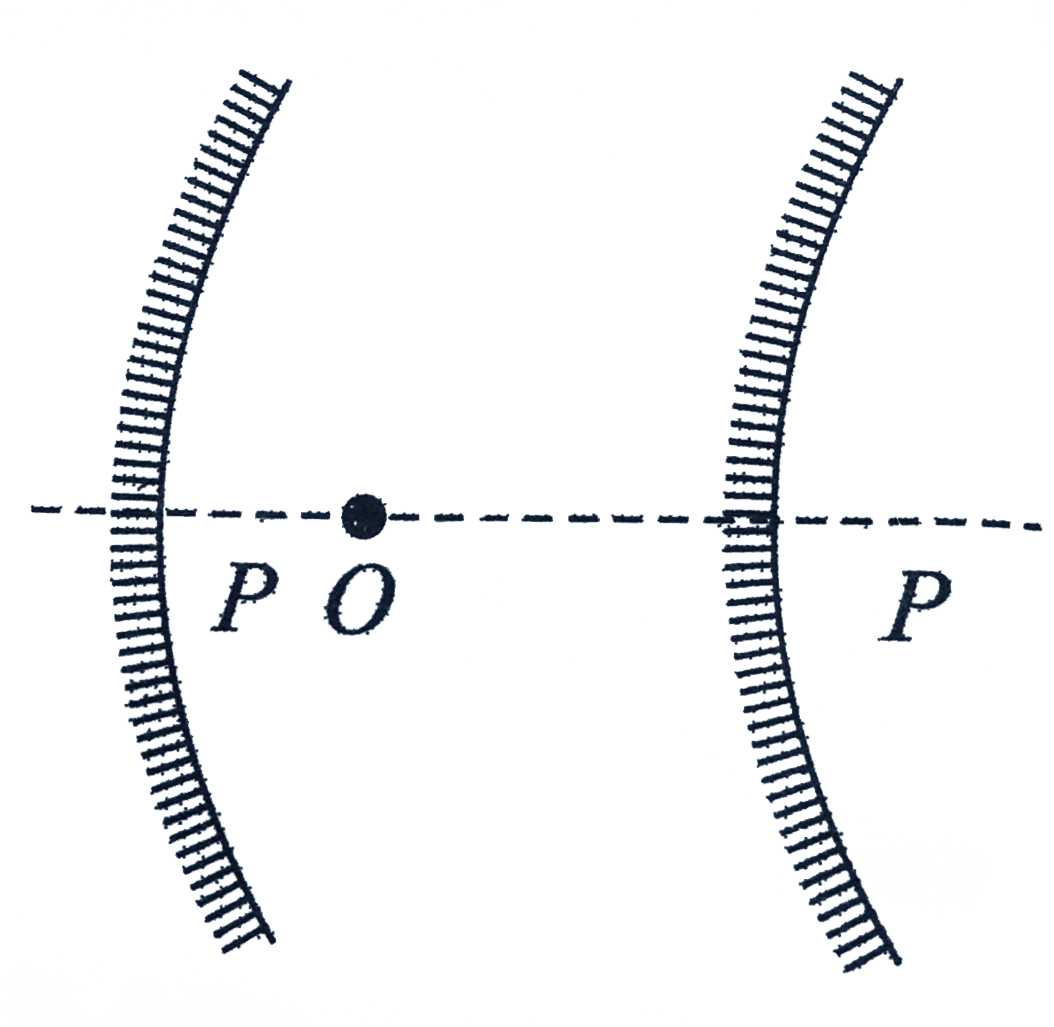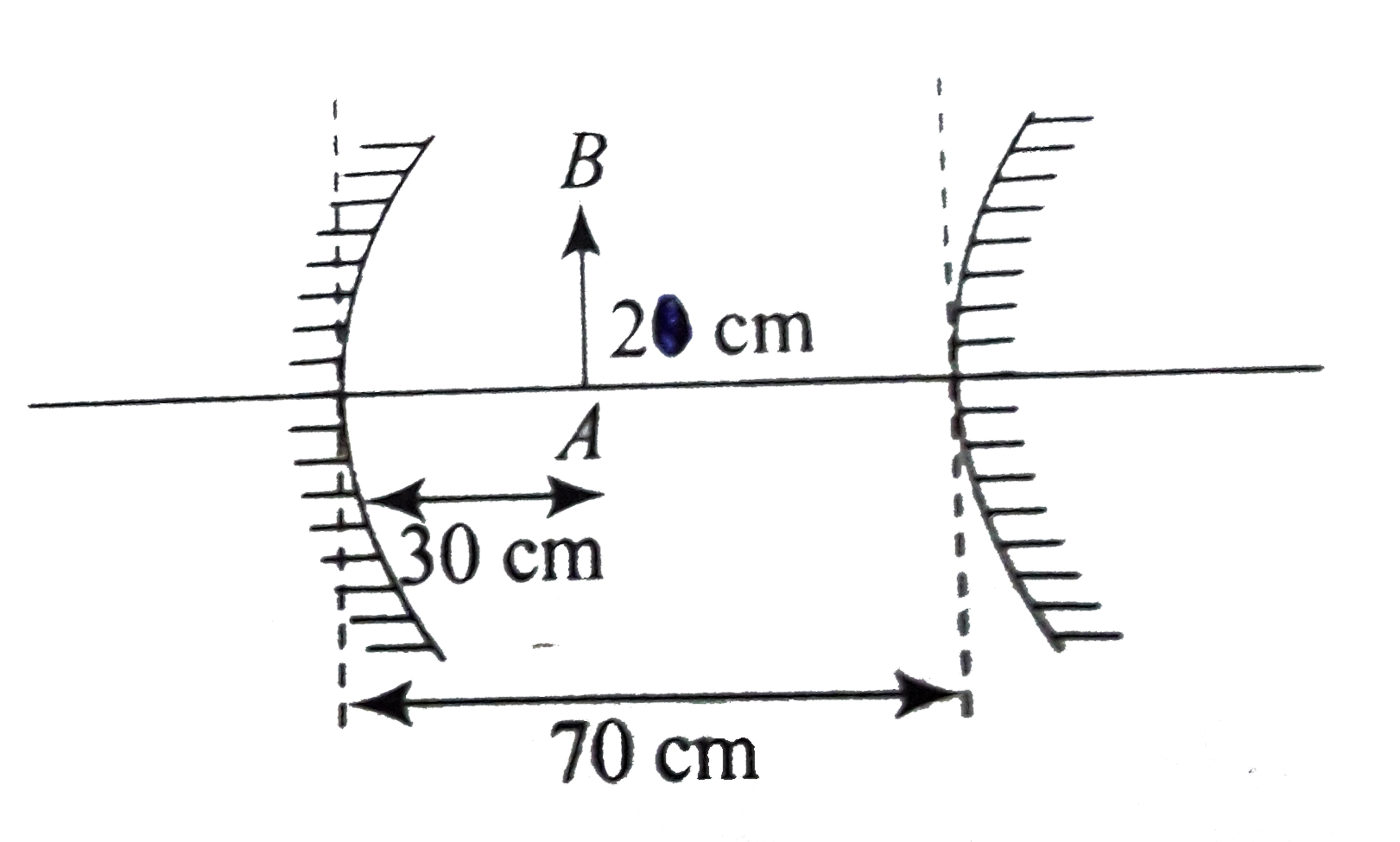A concave mirror cannot from
virtual image of virtual object
virtual image of real object
real imge of real object
real image of virtual object
The correct Answer is:A
To solve the question about the types of images formed by a concave mirror, we will analyze the conditions under which different types of images (real and virtual) can be formed based on the nature of the object (real or virtual).
1. Understanding the Types of Objects:
- A real object is one that is located in front of the mirror, where light rays converge.
- A virtual object is one that is located behind the mirror, where light rays appear to diverge from.
2. Image Formation by Concave Mirrors:
- Concave mirrors can form both real and virtual images depending on the position of the object relative to the focal point (F) and the center of curvature (C).
- Real images are formed when the object is placed outside the focal point (beyond F).
- Virtual images are formed when the object is placed between the focal point and the mirror (within F).
3. Analyzing the Mirror Formula:
- The mirror formula is given by:
1V=1F−1U
- Here, V is the image distance, F is the focal length, and U is the object distance.
- For a concave mirror, the focal length F is negative.
4. Determining the Sign Conventions:
- For real objects, U is negative (since it is measured against the direction of incident light).
- For virtual objects, U is positive (since it is measured in the direction of the incident light).
5. Case Analysis:
- Virtual Object:
- If the object is virtual (U is positive), substituting into the mirror formula gives:
1V=1(−F)−1(+U)
Since F is negative and U is positive, this results in V being negative.
- A negative V indicates that the image is virtual and formed on the same side as the object.
- Real Object:
- If the object is real (U is negative), substituting into the mirror formula gives:
1V=1(−F)−1(−U)
This can yield either a real or virtual image depending on the specific values of U.
6. Conclusion:
- A concave mirror cannot form a virtual image of a virtual object because the conditions do not satisfy the formation of a virtual image when the object is virtual. Thus, the answer is option A: "A concave mirror cannot form a virtual image of a virtual object."
- A real object is one that is located in front of the mirror, where light rays converge.
- A virtual object is one that is located behind the mirror, where light rays appear to diverge from.
- Concave mirrors can form both real and virtual images depending on the position of the object relative to the focal point (F) and the center of curvature (C).
- Real images are formed when the object is placed outside the focal point (beyond F).
- Virtual images are formed when the object is placed between the focal point and the mirror (within F).
- The mirror formula is given by:
1V=1F−1U
- Here, V is the image distance, F is the focal length, and U is the object distance.
- For a concave mirror, the focal length F is negative.
- For real objects, U is negative (since it is measured against the direction of incident light).
- For virtual objects, U is positive (since it is measured in the direction of the incident light).
- Virtual Object:
- If the object is virtual (U is positive), substituting into the mirror formula gives:
1V=1(−F)−1(+U)
Since F is negative and U is positive, this results in V being negative.
- A negative V indicates that the image is virtual and formed on the same side as the object.
- Real Object:
- If the object is real (U is negative), substituting into the mirror formula gives:
1V=1(−F)−1(−U)
This can yield either a real or virtual image depending on the specific values of U.
- A concave mirror cannot form a virtual image of a virtual object because the conditions do not satisfy the formation of a virtual image when the object is virtual. Thus, the answer is option A: "A concave mirror cannot form a virtual image of a virtual object."
Topper's Solved these Questions
- BOOK - DC PANDEY ENGLISHCHAPTER - REFLECTION OF LIGHTEXERCISE - Exercise Level 1 Subjective17videos
REFLECTION OF LIGHT
- BOOK - DC PANDEY ENGLISHCHAPTER - REFLECTION OF LIGHTEXERCISE - Level 2 Single Correct16videos
REFLECTION OF LIGHT
- BOOK - DC PANDEY ENGLISHCHAPTER - REFLECTION OF LIGHTEXERCISE - Exercise Level 1 Assertion And Reason10videos
REFLECTION OF LIGHT
- BOOK - DC PANDEY ENGLISHCHAPTER - RAY OPTICSEXERCISE - Medical entrance gallary76videos
RAY OPTICS
- BOOK - DC PANDEY ENGLISHCHAPTER - REFRACTION OF LIGHTEXERCISE - Level 2 Subjective21videos
REFRACTION OF LIGHT
Similar Questions
State the following statements as TRUE or FALSE.
a. A convex mirror cannot from a real image for a real object.
b. The image formed by a convex mirror is always diminished and erect.
c. Virtual image formed by a concave mirror is always enlarged.
d. Only in the case of a concave mirror, it may happen that the object and its image move in same direction.
e. In the case of a concave mirror, the image always move faster than the object.
f. If an object is placed in front of a diverging mirror at a distance equal to its focal length, then the height of image formed is half of the height of object.
g. For two positions of an object , a concave mirror can form englarged image.
h. Concave mirror is used as a rear view mirror in motor vehicles.
i. If some portion of the mirror ois covered, then complete image will be formed but of reduced brightness.
j. A plane mirror always forms an erect iamge of same size as that of the object.
k. The image formed by a plane mirror has left-right reversal.
l. A virtual object means a converging beam.View SolutionA concave mirror of focal length 10cm is placed in front of a convex mirror of focal length 20 cm. The distance between the two mirrors is 20cm. A point object is placed 5cm from the concave mirror. Discuss the formation of image.
 View Solution
View SolutionAssertion : If magnification of real object is -2. Then, it is definitely a concave mirror.
Reason : Only concave mirror can make real images of real objects.View SolutionA concave mirror of focal length f produces a real image n times the size of the object. What is the distance of the object from the mirror?
View SolutionA concave mirror of focal length 10cm and a convex mirror of focal length 15cm are placed facing each other 40cm apart. A point object is placed between the mirrors, on their common axis and 15cm from the concave mirror. Find the position and nature of the image produced by successive reflections, first at the concave mirror and then at the convex mirror.
View SolutionA concave mirror of focal length f (in air) is immersed in water (μ=4/3). The focal length of the mirror in water will be
View SolutionA concave mirror can be used for close make up or shaving glass. ______
View SolutionAn object is placed 42 cm, in front of a concave mirror of focal length 21 cm. Light from the
concave mirror is reflected onto a small plane mirror 21 cm in front of the concave mirror
Where is the final image?View SolutionA concave mirror and a convex mirror of focal lengths 10cm and 15cm are places at a distance of 70cm. An object AB of height 2cm is places at a distance of 30cm from the concave mirror. First ray is incident on the concave mirror then on the convex mirror. Find size, position, and nature of the image.
 View Solution
View SolutionAn object is placed at a distance of 30 cm from a concave mirror and its real image is formed at a distance of 30 cm from the mirror. The focal length of the mirror is
View Solution

